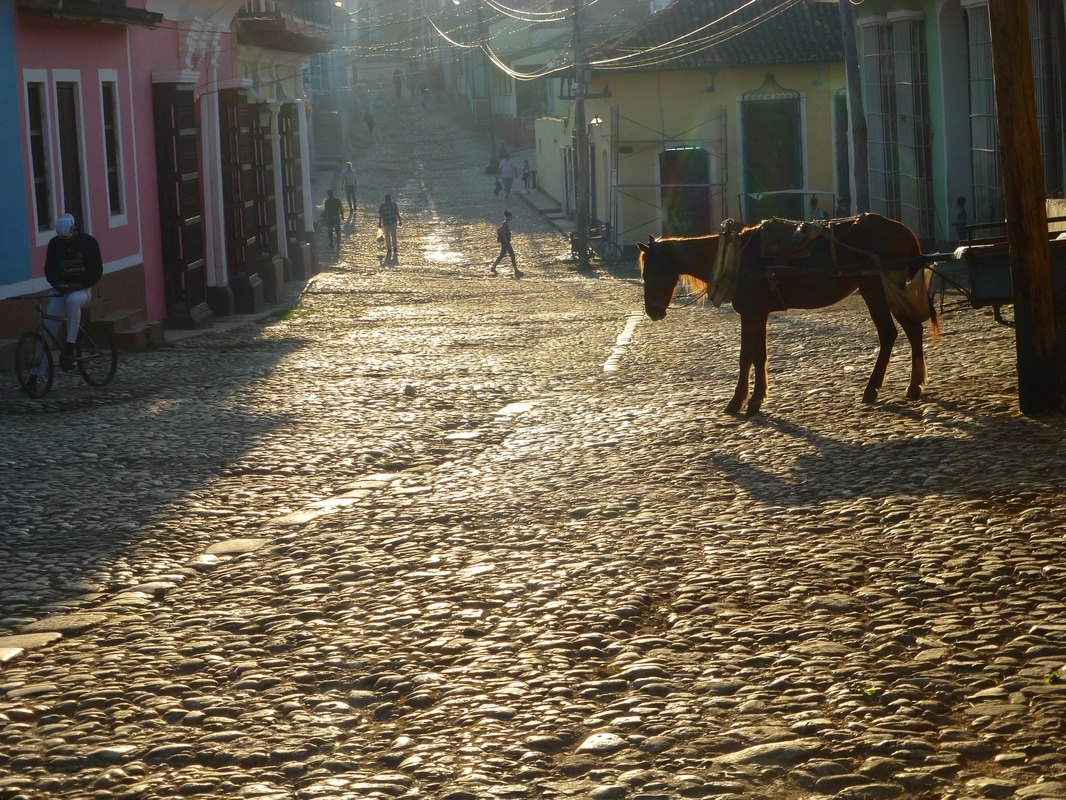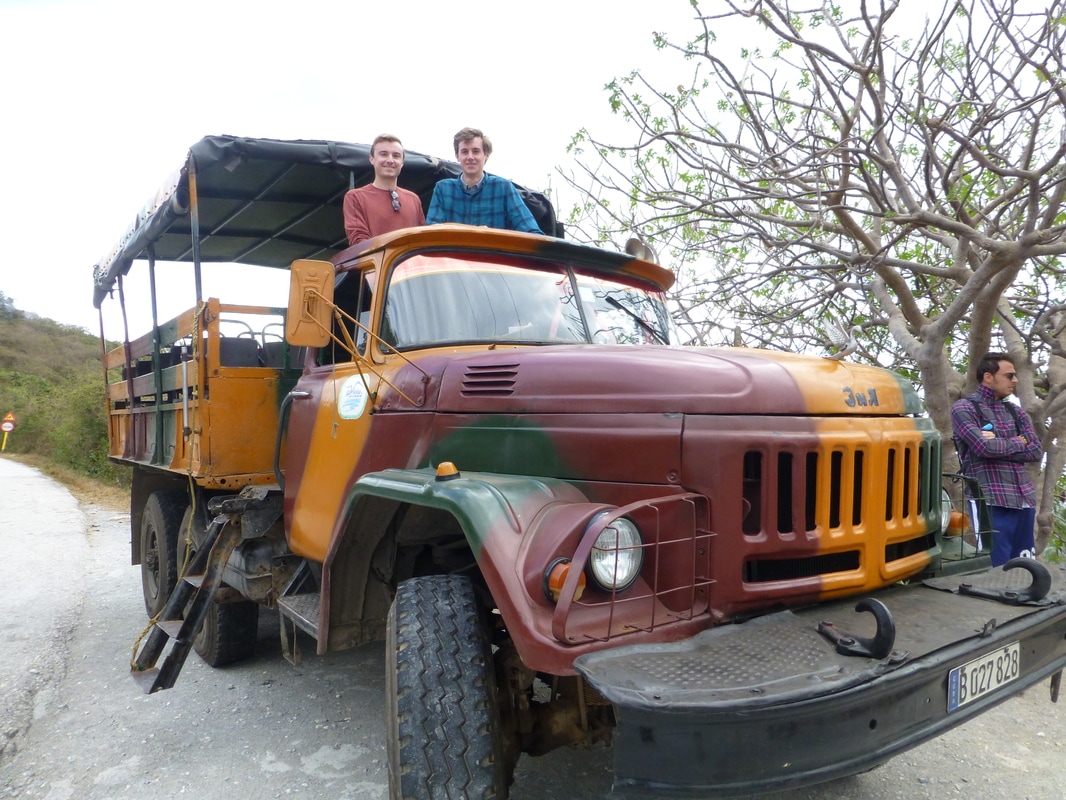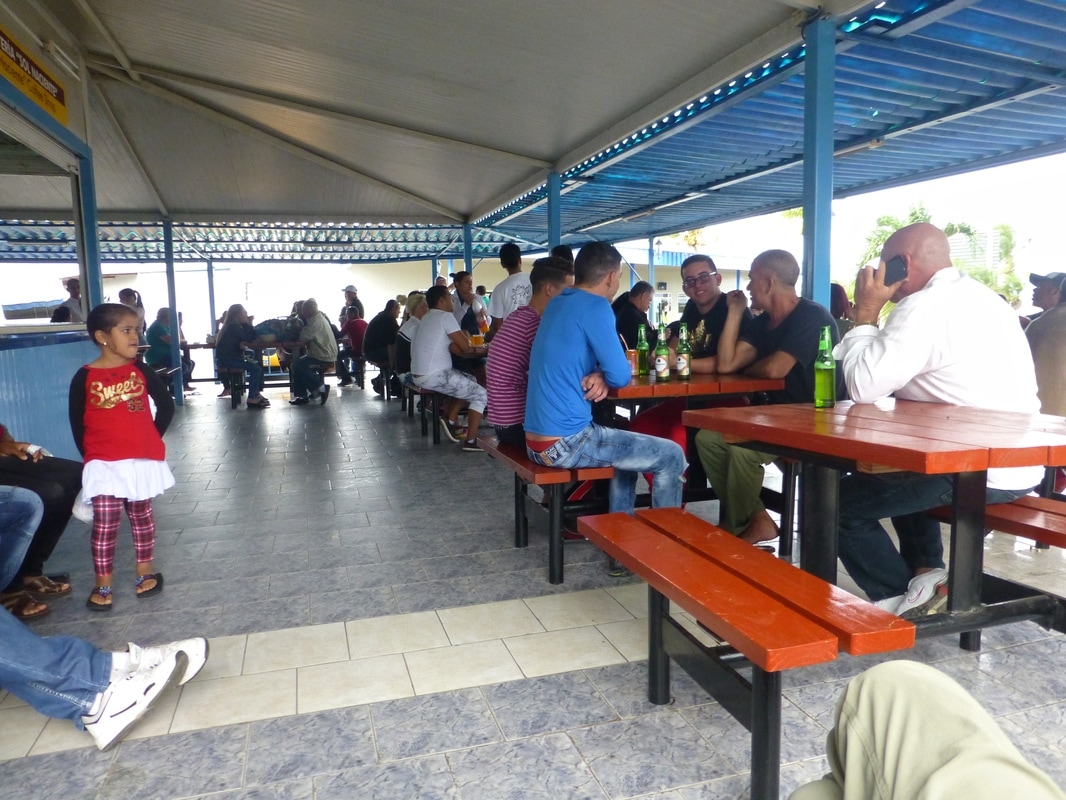|
Cuba has long been a popular place for travelers from other parts of the world. Since 2015, Americans haven't needed a specific license to legally visit Cuba, but the travel purpose must fall under a category licensed by the U.S. government. For our family trip, that meant "Educational/People-to-People." But until last month, most Americans were only able to conveniently visit with a group on a charter tour. As of December 2016, direct commercial flights to Cuba became available from the U.S., making travel for U.S. citizens much easier and more economical. Our family jumped at the opportunity in early January. We decided to skip Havana and instead flew into much smaller Cienfuegos airport to get to know Trinidad, and its surrounding area. We wanted to get to know Cuban people during our visit. We opted for staying in casas particulares with Cuban families - a common practice. Over our visit we stayed with 2 generous and considerate families. We ate breakfast and sometimes dinner in our casa. Conversation was lively, informative, and included politics. Our first family lived outside of the town center, up the hill, in a real neighborhood in the city of Trinidad in Sancti Spíritus province. Our second family lived in a little fishing village near the coast. Founded in 1514, Trinidad, one of the best-preserved colonial cities in the Caribbean, was our base. It's a UNESCO World Heritage site. During our stay, we explored nearly every street in town. The farther we got from the center, the more interesting it became. While Cuba is famous for its classic cars, I found the light and the street sounds most compelling. Music pulses from every crevice. Bread and fruit sellers in clopping horse carts make their way down cobblestone streets at dawn. Each object, motion, and being becomes art in light that I can only describe as possessed by El Duende. Federico García Lorca once described the fiery spark behind what makes art that stirs the soul - “The duende, then, is a power, not a work. It is a struggle, not a thought. I have heard an old maestro of the guitar say, ”The duende is not in the throat; the duende climbs up inside you, from the soles of the feet.’ Meaning this: it is not a question of ability, but of true, living style, of blood, of the most ancient culture, of spontaneous creation….” In Cuba, El Duende is inescapable. Within an hour or so from Trinidad, dozens of waterfalls, verdant mountains, and shade grown coffee plantations await exploration. We spent a day aboard an old Russian military transport vehicle visiting Topes de Collantes National Park and a shade-grown coffee plantation. The topography and mountaintop ocean views were stunning. While you can get by in Cuba with just a little Spanish, if you'd like to get off the beaten track, you'll have lots more fun and interaction if you speak Spanish. Don't worry about asking Cubans to slow down- they speak fast, fast, fast - and they laugh about it. Our Spanish improved tremendously with practice. Interestingly, just a few years ago, Russian was taught to Cuban schoolchildren. These days, most schools are teaching English. As our kids (now adults) scatter to do their own thing, we've been grateful to have this time together. While waiting in the airport on the way home, we talked about all the Latin American countries we've traveled and how, in each, the people we met were noticeably kinder and more generous than we're used to in the U.S. The Cuban people top our "kind and generous" list. And while they certainly hope to improve their circumstances after decades of struggle and hardship, they appreciate what they have gained in healthcare and education. They are fervent in their desire to keep the positive outcomes of La Revolución while opening to new ideas that imply greater freedoms. Thoughts of self-improvement on the backs of others or by exploiting the environment seem to be nonexistent. Greed just isn't a thing. At least not among those we met. Imagine that. ¡Gracias, Cuba! Text and photos ©2017 Michelle Louis
It's the season of freezing. Whether the landscape is covered in a pristine blanket of soft white, gray slushy slop, or just exposed frozen ground, plants and animals living in areas where cold is the seasonal norm adapt to survive. Animals have a broad set of adaptive mechanisms. They insulate, hibernate, store food, synthesize anti-freeze in their circulatory systems, and gather together for warmth. They store fat to burn during leanest times. They die, expecting their eggs or larvae to carry on the following spring. They prey on those weakened by winter's harshness. As for my own ability to adapt, a long hike in new-fallen snow is glorious-- especially knowing a cozy chair in front of a blazing fire and mug of hot tea await. Is that cheating? Wishing you a healthy, inspired, and fearless New Year! Winter is the king of showmen,
Turning tree stumps into snowmen And houses into birthday cakes And spreading sugar over lakes. Smooth and clean and frosty white, The world looks good enough to bite. That’s the season to be young, Catching snowflakes on your tongue. Snow is snowy when it’s snowing, I’m sorry it’s slushy when it’s going. ~Ogden Nash |
Author
Artist and naturalist Michelle Louis has a vigorous curiosity about the natural world. Her energetic, investment-quality paintings bring balance and harmony Archives
June 2024
©2023 Michelle Louis All rights reserved. Content and images are property of the artist.
Categories
|



















 RSS Feed
RSS Feed